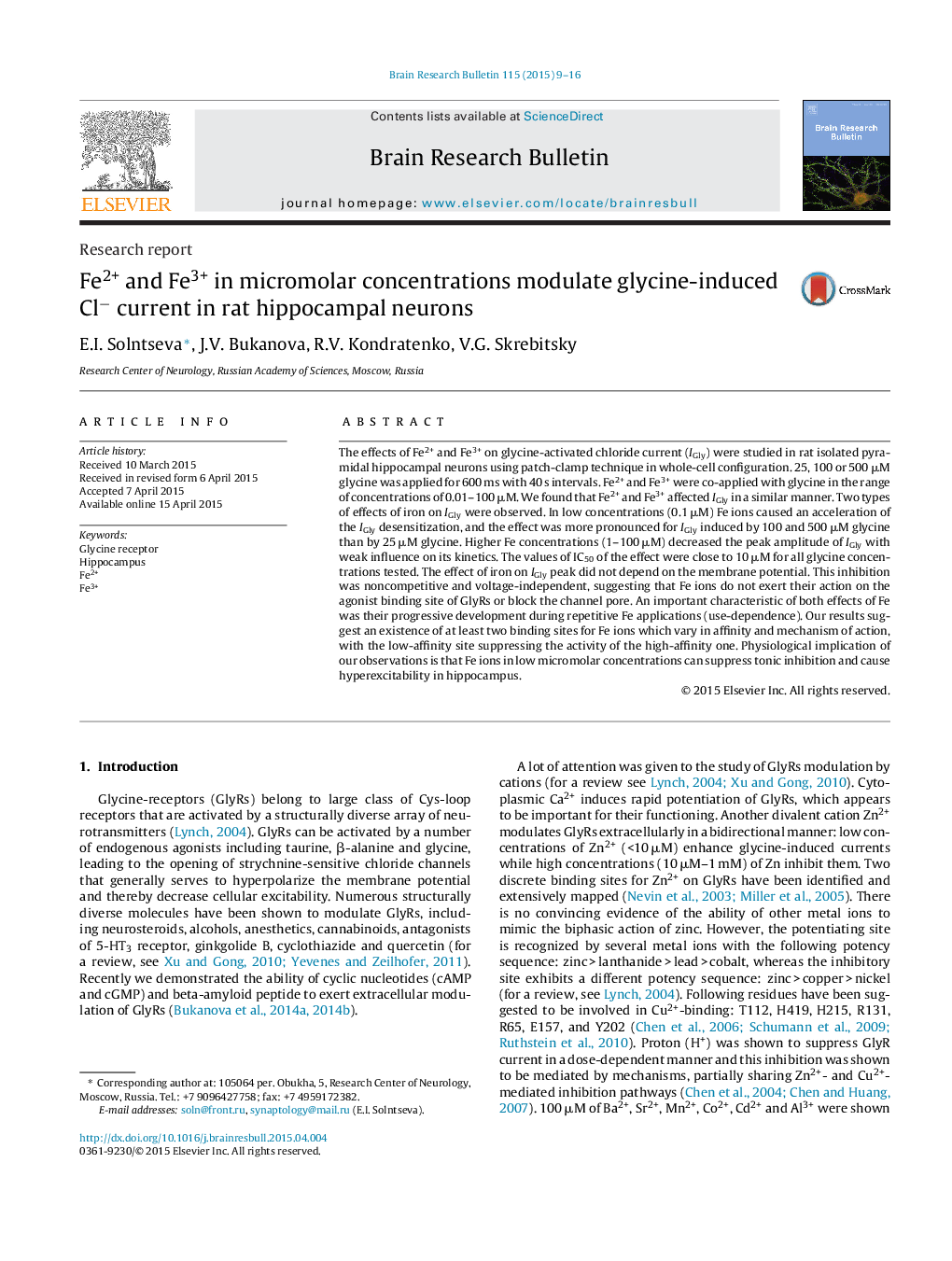| کد مقاله | کد نشریه | سال انتشار | مقاله انگلیسی | نسخه تمام متن |
|---|---|---|---|---|
| 4318689 | 1613240 | 2015 | 8 صفحه PDF | دانلود رایگان |

• The effects of Fe2+ and Fe3+ on glycine-activated current (IGly) were studied.
• Fe2+ and Fe3+ affected IGly in a similar manner.
• 0.1 μM of Fe ions caused an acceleration of the IGly desensitization.
• 10–100 μM of Fe ions decreased the peak amplitude of IGly with IC50 close to 10 μM.
• This inhibition of IGly peak was noncompetitive and voltage-independent.
The effects of Fe2+ and Fe3+ on glycine-activated chloride current (IGly) were studied in rat isolated pyramidal hippocampal neurons using patch-clamp technique in whole-cell configuration. 25, 100 or 500 μM glycine was applied for 600 ms with 40 s intervals. Fe2+ and Fe3+ were co-applied with glycine in the range of concentrations of 0.01–100 μM. We found that Fe2+ and Fe3+ affected IGly in a similar manner. Two types of effects of iron on IGly were observed. In low concentrations (0.1 μM) Fe ions caused an acceleration of the IGly desensitization, and the effect was more pronounced for IGly induced by 100 and 500 μM glycine than by 25 μM glycine. Higher Fe concentrations (1–100 μM) decreased the peak amplitude of IGly with weak influence on its kinetics. The values of IC50 of the effect were close to 10 μM for all glycine concentrations tested. The effect of iron on IGly peak did not depend on the membrane potential. This inhibition was noncompetitive and voltage-independent, suggesting that Fe ions do not exert their action on the agonist binding site of GlyRs or block the channel pore. An important characteristic of both effects of Fe was their progressive development during repetitive Fe applications (use-dependence). Our results suggest an existence of at least two binding sites for Fe ions which vary in affinity and mechanism of action, with the low-affinity site suppressing the activity of the high-affinity one. Physiological implication of our observations is that Fe ions in low micromolar concentrations can suppress tonic inhibition and cause hyperexcitability in hippocampus.
Journal: Brain Research Bulletin - Volume 115, June 2015, Pages 9–16